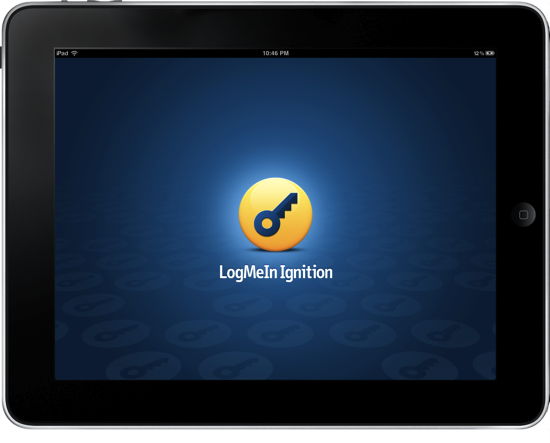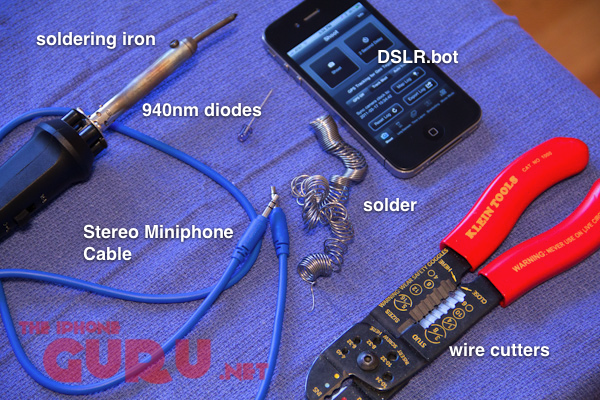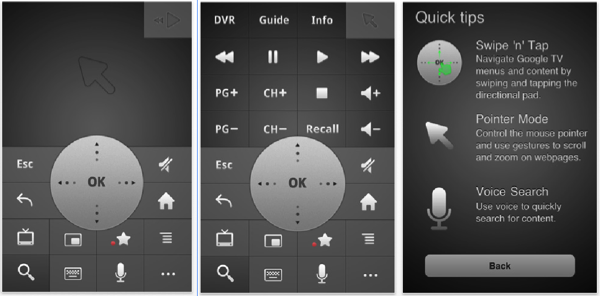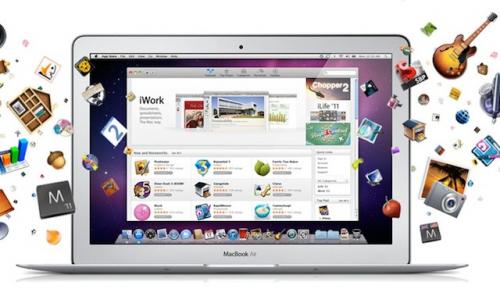QuickShot is the camera app Apple would make if your photo library existed in Dropbox and not iPhoto. It’s designed to be simple and pleasant to use, working in the background to upload photos as you attend to other tasks and will import old favorites from your Camera Roll so they’re shared to the cloud as well. Configure your iPhone’s camera flash, enable geotagging, set focus and exposure, then snap pictures from the front or rear facing camera for scenery or photo-booth style pics. Right from your camera controls, you see your uploads with the tap of a button, and send your photos off to custom locations for sharing. Federico has taken a look at both the iPhone and iPad versions of QuickShot (and it’s all one universal app), and while you may be familiar with its photo snapping abilities, you may wondering about video. To be implemented soon, you’ll be able to record video from your iPad 2 or iPhone 4 and upload the raw file just as you do with photos. HUGE! Whether you’re working in the field or sharing photos on vacation instantly with friends and family, everyone could use a dose of QuickShot for iOS. It’s only $0.99 in the App Store if you can’t wait, but you might want to stick around. We’re going to run a relatively short giveaway so you too can have a wireless library, and you’ll want to hurry past the break to join in.
Posts tagged with "iPhone"
Giveaway: iPad 2 or iPhone 4, QuickShot Is The Camera App Integrated With Dropbox
SkyView: Explore The Universe with Augmented Reality
Thanks to the camera built into every iPhone (and now iPad), we have seen clever implementations of augmented reality applications in the past. Augmented Reality software, also known as “AR apps”, is meant to literally “augment” real-life objects you see on the device’s screen through the camera by adding digital information or other items. A navigation app like Where To, for example, places virtual directions on a real map captured by the iPhone’s camera. These experiments are very cool and show off the capabilities of iOS devices when combined with software that takes advantage of modern technologies.
SkyView, an iPhone app by Terminal Eleven, lets you explore the universe from your iPhone by simply pointing the camera to the sky. Using GPS coordinates, gyroscope rotation and 3D graphics, SkyView augments what you see by adding stars, planets, satellites, space stations and constellations on the screen.
Once you point the iPhone’s camera to the sky and the app fetches information correctly via GPS, you’ll see a variety of sky objects popping up on screen – like stars, the sun, satellites and so forth, depending on where you are in the world. If you tap on an item, a bar appears at the bottom of the screen revealing its name; tap again, and the bar will expand to show RA and DEC location. Tap the arrow, and SkyView will let you flick through a detailed description of the object you’ve discovered. If you select the Sun, Moon or another planet, you can also see the path they’ll follow during a 24 hour period. In the Settings, you can choose how many 3D layers to display or hide (including dwarf planets) and adjust time and date basing on your location.
At $0.99 in the App Store, SkyView is a neat experiment that makes great use of the iPhone’s camera. Check it out here, free version available as well.
LogMeIn Ignition Update Includes File Manager: Manage Files Between Computers & iPad/iPhone
While I could have jumped on this update as soon as it was announced by the LogMeIn crew, I wanted to go hands on with LogMeIn Ignition’s new features before passing final judgement of whether the new file sharing capabilities are simply cool or deservedly awesome. Using LogMeIn’s free client, all of your computers are accessible to your iPad and iPhone by simply logging in with your username and (strong) password. Similar to how you navigate between open pages in Safari, you can navigate between File Managers on different computers in LogMeIn Ignition to copy & move files between computers, to your iPad, or from your iPad. It works extremely well, and I was able to move files between two Windows boxes and my iPad while tethered to a 3G enabled device. You can open a variety of file types in LogMeIn (I tested .PDF, .TXT, and .RTF files), and once those files are on your iPad you can choose to open files in other applications if permitted (GoodReader is handy to have around for this). Even if LogMeIn Ignition can’t open the file, you should still be able to move and copy files between computers. Interestingly, you don’t even have to copy files to your iPad to open them - LogMeIn Ignition temporarily caches the file and enables you to keep the cache or discard it as needed. You’ll have to get used to navigating LogMeIn Ignitions’s File Manager, as tapping on folders highlights the folder for copying & moving while tapping on its blue arrow will reveal its contents. I think LogMeIn Ignition will refuse to copy certain folders based on size (if the total contents won’t fit on your iPad) or type (I couldn’t copy the entire C:\ to my iPad for example). Otherwise, navigating and using the available tools to manage your files was straightforward.
MacStories Product Review: XtremeMac InCharge Portable
Our iPhones and other portable gadgets require a lot of power to keep them running. The iPhone’s legendary battery life could still use a good boost if you’re consistently uploading Twitter pics and recording audio for those Macworld Expo interviews, and even that old BlackBerry you still keep around could use a lift. Back in the hotel, wouldn’t it be nice if you and a friend could share an outlet to charge your USB powered gadgets while cameras and other recording tools create a rat’s nest of wires to your Mac? XtremeMac’s InCharge Portable provides a duo of USB ports that are ready to charge your gadgets, but even better is the trick up its sleeve.
How to Use An iPhone and a DIY IR Trigger to Control Your DSLR
Camera junkies rejoice! The iPhone Guru has a neat little DIY post on how to create a homemade IR trigger capable of firing your DSLR camera from a couple dollars worth of parts. He also shows you how to use DSLR.bot (an iPhone app) to trigger your camera, record GPS locations, and shoot time lapse sequences.
Matthew makes note that the reason he’s doing this and not buying a branded IR or cabled remote is this:
DSLR.bot app has some pretty compelling features that allow you to do GPS tagging with a Map Log and synchronized timing that you can then merge with your image data to create Geo-located images shot with your DSLR among some other nice features like HDR bracketing, time lapse shooting and an Intervalometer. It will do far more than even Canon’s $120 timer remote will do and the whole thing will cost you less than $20.
Video and more pictures after the break… Read more
Google Launches Google TV Remote for iPhone
For the few of you who may own a Google TV enabled device (or a TV such as the Sony Internet TV), your iPhone, iPod touch, or iPad can now power your futuristic format thanks to the new Google TV Remote app. It’s chock full of glorious soft buttons that could take the Logitech Harmony to task, and includes Voice Search so you can quickly search for content using your iPhone’s microphone. Multiple Google TV Remotes can work over the same network as well, meaning anyone who has an iOS (or Android) enabled device can browse the television right from their lap. The app is free to download from the App Store, and we’ve included a quick video of the Android version below: the experiences are very similar (the iPhone can’t push webpages to their Google TV, however).
#MacStoriesDeals - Friday
NFC Technology In iPhones Could Also Enable Remote Computing
According to a source of Cult of Mac, Apple is planning to use Near Field Communication (NFC) not just as a method for retail payment services but also to turn an iPhone into a pseudo-ID tag for remote login. According to Cult of Mac:
…when a NFC-equipped iPhone is paired with a guest machine, part of the user’s profile includes the apps they’ve purchased through the Mac App Store. The icons for their apps appear on the remote Mac, but aren’t downloaded, our source said.
Once the guest machine is logged into; users would be able to open any of their apps, which would download on demand, although presumably only those from the Mac App Store. Documents too could be accessed and synced using MobileMe from anywhere using this remote login system and once a user leaves, the Mac would wipe any documents and applications.
As MacRumors points out, it is similar to the once promised feature of ‘Home on iPod’ that would have allowed OS X Panther users to sync their Home directory on to an iPod for easy document storage regardless of where you were. Cult of Mac claims that this new feature is currently being developed in OS X Lion but their source stresses that it isn’t guaranteed to become public.
[Via Cult of Mac]
#MacStoriesDeals - Thursday
Happy St. Paddy’s Day all over the world and Happy National Unity Day in Italy! Here are today’s deals on iOS, Mac, and Mac App Store apps that are on sale for a limited time, so get ‘em while they’re hot!










